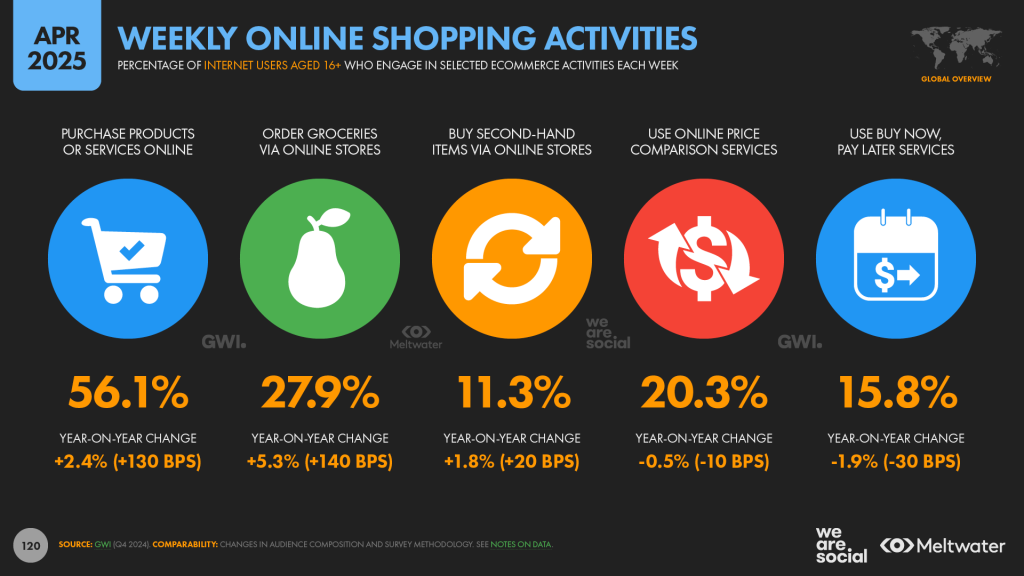Small Business Tips – a Social Media Strategy
In the contemporary business landscape, a well-defined social media strategy has become a crucial component for the success of small businesses. The significance of a meticulously crafted plan can be observed in several key areas that directly contribute to enhanced brand visibility and customer engagement. As consumers increasingly turn to social media platforms to discover, interact with, and purchase from brands, small businesses cannot afford to overlook the impact of this digital presence.
Firstly, a cohesive social media strategy allows businesses to promote their brand consistently across various platforms. This consistency plays a vital role in making the brand recognizable and memorable among potential customers. By crafting engaging content that resonates with their target audience, businesses can create a strong online identity that fosters trust and loyalty. Additionally, a strategic approach enables brands to utilize analytics and insights to refine their messaging and outreach, ensuring that their content aligns with the expectations and preferences of their audience.
Moreover, having a focused social media strategy helps to foster stronger relationships with customers. The modern consumer expects brands to not only provide quality products and services but also to engage in meaningful interactions. When small businesses actively participate in conversations, respond to customer inquiries, and share valuable content, they cultivate a community around their brand. This engagement not only enhances customer satisfaction but also encourages positive word-of-mouth, which is invaluable in attracting new customers.
Finally, the ultimate goal of any business strategy is to drive growth. A robust social media presence can significantly increase lead generation, customer retention, and conversion rates. By effectively communicating with their audience and understanding their needs through social media, small businesses position themselves to capitalize on opportunities for expansion and development, making a well-executed social media strategy an essential part of overall business success.

Business people meeting to discuss the situation on the market.
Key Components of a Social Media Strategy
Crafting an effective social media strategy requires careful consideration of several key components. The first essential element is setting clear objectives. These objectives should be specific, measurable, attainable, relevant, and time-bound (SMART). By defining what your small business aims to achieve through social media—such as increasing brand awareness, generating leads, or fostering customer engagement—you create a roadmap that guides all future actions and decisions on these platforms.
The next component is identifying target audiences. Understanding who your audience is enables you to tailor your messaging and outreach effectively. Conducting thorough market research can provide insights into demographics, interests, and online behaviors. This information allows your business to segment your audience and create targeted campaigns that resonate with different groups, enhancing the efficacy of your social media efforts.
Choosing the right platforms is also crucial to a successful social media strategy. Not all platforms are suited for every business or target audience. For example, visually driven content may perform better on Instagram or Pinterest, while professional networking might be more effective on LinkedIn. By focusing your resources on the platforms where your audience is most active, you increase your chances of engagement and conversion.
Lastly, developing a content plan is vital for maintaining consistency and quality in your social media output. This plan should include the type of content you will produce—be it informative blog posts, engaging videos, or captivating images—and a posting schedule. A well-structured content strategy not only helps in building brand identity but also keeps your audience engaged over time, promoting ongoing dialogue and brand loyalty.
Each of these components plays an integral role in creating a cohesive and effective social media strategy that propels your small business toward its marketing goals.
Creating a Social Media Style Guide
In the ever-evolving landscape of social media, maintaining a consistent brand identity is paramount for small businesses aiming for effective engagement with their target audience. A social media style guide serves as a vital tool in achieving that goal. This document encapsulates the tone, voice, and visual elements of a brand, ensuring coherence across various platforms.
The significance of having a defined tone and voice cannot be overstated. It allows businesses to communicate their values and personality consistently, helping to establish a recognizable presence. For instance, a playful tone may resonate well with a younger clientele, while a more formal voice might be appropriate for industries such as finance or healthcare. By articulating these elements in a style guide, small businesses can navigate various social media interactions confidently, creating a lasting impression on their audience.
Visual consistency is equally important and encompasses the use of brand colors, logos, and typography. A devoted section in the style guide should detail the specific visual assets representing the brand, including imagery styles and graphic elements. These features work hand-in-hand with the textual aspects to paint a cohesive picture, enhancing customer recognition across different platforms.
Moreover, a social media style guide fosters accountability among team members managing the brand’s online presence. It serves as a reference point for content creators and community managers, effectively minimizing the risk of miscommunication or deviation from the brand’s established persona. In turn, this approach not only strengthens brand identity but also helps to build trust among consumers.
Ultimately, a well-structured social media style guide is essential for small businesses aiming to thrive in the competitive digital landscape. By investing in such a framework, brands can significantly enhance their visibility and cultivate meaningful connections with their audience, ensuring a consistent and recognizable presence on social media channels.
Leveraging Influencer Partnerships
In today’s digital landscape, leveraging influencer partnerships has emerged as an effective strategy for small businesses looking to enhance their reach and credibility. Influencers, who are individuals with a substantial following on social media platforms, can play a pivotal role in amplifying your brand message while connecting with your target audience more authentically. Collaborating with the right influencers not only expands your brand’s visibility but also fosters trustworthiness among potential customers.
Identifying the right influencers to partner with is crucial. It involves recognizing individuals whose values align with your brand and who actively engage with their followers. Consider metrics such as engagement rate, follower demographics, and content relevance when evaluating potential influencers. Tools and platforms that track influencer performance can assist in finding the right match. Micro-influencers, with smaller yet highly engaged audiences, can often yield better results for small businesses due to their perceived authenticity and closer connections with their followers.
Building mutually beneficial partnerships entails clear communication and setting well-defined goals. Engage with influencers early on, discussing collaborative content ideas that align with both parties’ interests. Consider compensating influencers not just financially but also by offering products or experiences, creating a more dynamic relationship. The campaign should resonate with the influencer’s audience, ensuring that promotional content feels organic rather than forced.
Measuring the success of influencer campaigns is vital for assessing their impact on brand awareness and customer engagement. Utilize analytics tools to track metrics such as website traffic, social media impressions, conversions, and follower growth. Feedback from the audience following the campaign can provide invaluable insights into the effectiveness of the partnership and help refine future collaborations. In summary, by thoughtfully leveraging influencer partnerships, small businesses can significantly enhance their social media strategy, facilitating growth and building a robust online community.
Engagement and Community Building
Engagement plays a pivotal role in the effectiveness of your social media strategy. It refers to the interactions you foster with your audience, which can significantly influence brand loyalty and community development. Responding to comments, questions, and concerns is one way to enhance engagement. This not only shows that you value your audience’s input but also builds a personal connection. A simple acknowledgment can lead to deeper conversations, bridging the gap between the brand and its followers.
Hosting live events, such as Q&A sessions or product launches, also contributes to active engagement. Live interactions allow customers to connect with your brand in real-time, fostering a sense of belonging within your community. These events can showcase your brand’s personality, ethos, and values, allowing for an authentic interaction that can leave a lasting impression on your audience. Furthermore, live events can be combined with promotional strategies, such as exclusive events for followers, encouraging more users to join your social media channels.
Another effective method for enhancing community building is through user-generated content (UGC). Encouraging your audience to share their experiences, photos, or reviews can create a sense of ownership among your followers. By spotlighting user contributions, you not only enrich your content but also validate your customers’ experiences. This organic form of marketing often resonates better with potential customers, as it is perceived as genuine and relatable, rather than overtly promotional. By integrating strategies that encompass engagement, live events, and user-generated content, small businesses can successfully build a thriving community around their brand, ultimately fostering loyalty and driving organic growth.
Monitoring and Analyzing Performance
Monitoring and analyzing social media performance is crucial for small businesses seeking to optimize their strategy and enhance engagement with their audience. By leveraging analytics tools offered by various platforms, businesses can gain valuable insights into their social media presence. The key metrics to assess include engagement rates, follower growth, and conversion rates. These indicators provide a comprehensive overview of how well a social media strategy is performing and highlight areas for improvement.
Engagement rates are a vital metric indicating how actively users are interacting with content. This includes likes, shares, comments, and overall interaction with posts. A high engagement rate suggests that content resonates with the audience, which can lead to increased brand loyalty and customer retention. Small businesses should aim to develop content that encourages dialogue and captures the interest of their followers, as this will improve engagement scores.
Another important metric is follower growth, which reflects the effectiveness of social media campaigns and overall brand awareness. Analyzing follower growth over time can help small businesses identify trends and patterns, allowing them to tailor their postings and campaigns accordingly. For instance, if a specific type of content leads to a surge in new followers, businesses might consider creating more similar posts to maintain that momentum.
Conversion rates represent the percentage of users who complete a desired action as a result of engagement, such as signing up for a newsletter or making a purchase. Tracking this metric enables small businesses to measure the effectiveness of their social media strategies in driving actual sales or leads. By analyzing which posts or campaigns provide the highest conversion rates, businesses can refine their approach, allocating resources to techniques that yield the best results, thus fostering a more productive social media environment.
Adapting to Trends and Changes in Social Media
In the rapidly evolving landscape of social media, the ability to adapt to changing trends and frequent algorithm updates is crucial for small businesses aiming to maintain a competitive edge. Social media platforms frequently revise their algorithms to enhance user experience, which can impact the visibility of business posts. Therefore, staying informed about these changes is essential for optimizing engagement and reach.
One effective strategy for small businesses is to actively monitor industry news and updates related to social media. Subscribing to newsletters, following thought leaders, and participating in relevant online forums can provide valuable insights. Moreover, utilizing analytics tools can help track engagement metrics, revealing what content resonates with your audience and what does not. This data-driven approach enables businesses to refine their strategies in response to changing consumer preferences and platform dynamics.
Another crucial aspect is flexibility. Small businesses should regularly assess their social media strategies, allowing for modifications as new trends emerge. This can involve experimenting with various formats such as video content, live streams, or short-form posts, which are gaining popularity on platforms like Instagram and TikTok. Engaging with your audience through polls, Q&A sessions, or sharing user-generated content can also promote a sense of community and help brands stay relevant.
Furthermore, consider leveraging social media management tools that allow for scheduling posts and monitoring multiple platforms simultaneously. These tools not only aid in maintaining a consistent posting schedule but also assist in quickly reacting to ongoing trends. By investing time in understanding the nuances of different social media channels, small businesses can create tailored content that aligns with current trends, ultimately enhancing brand visibility and engagement.


